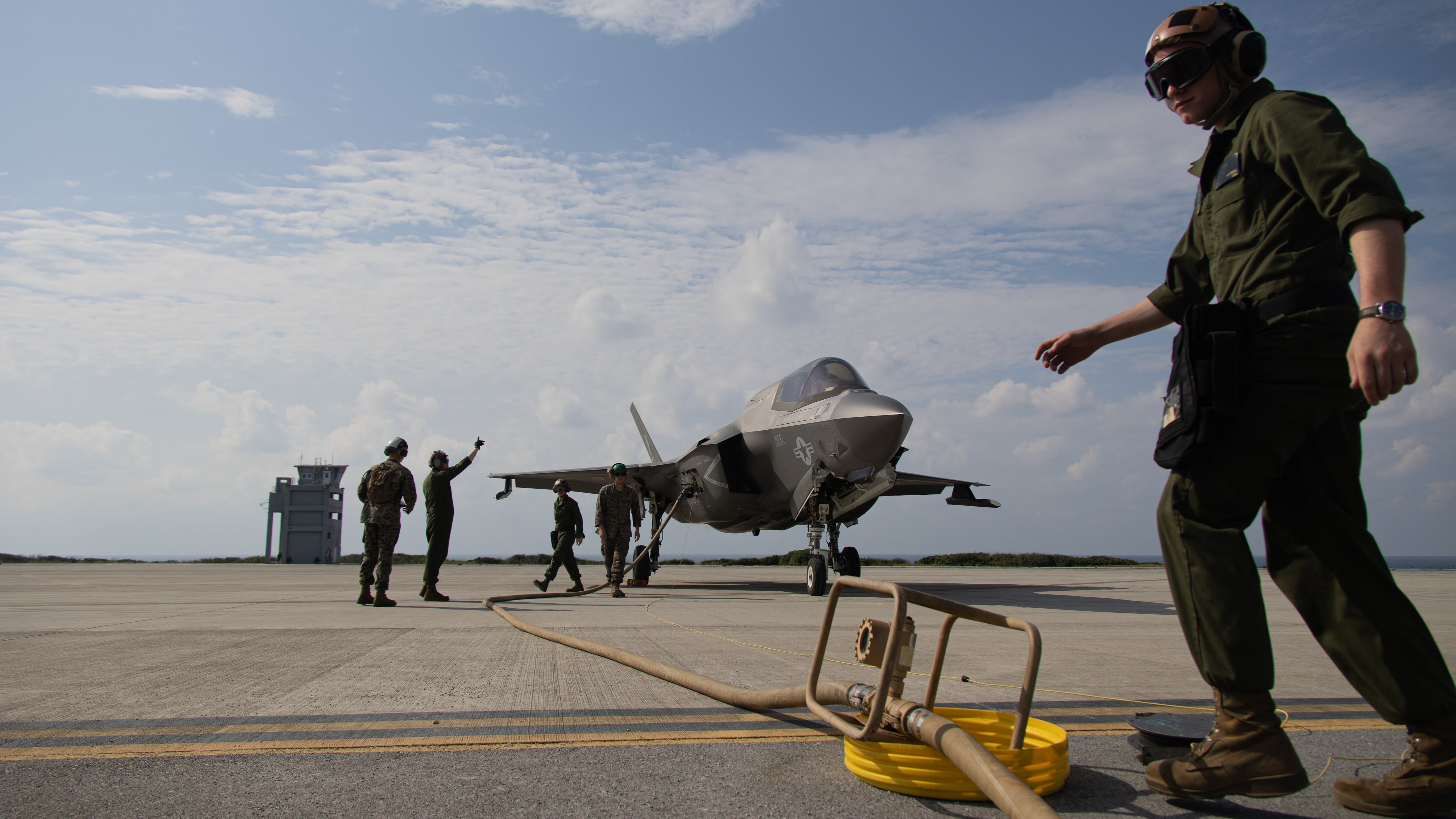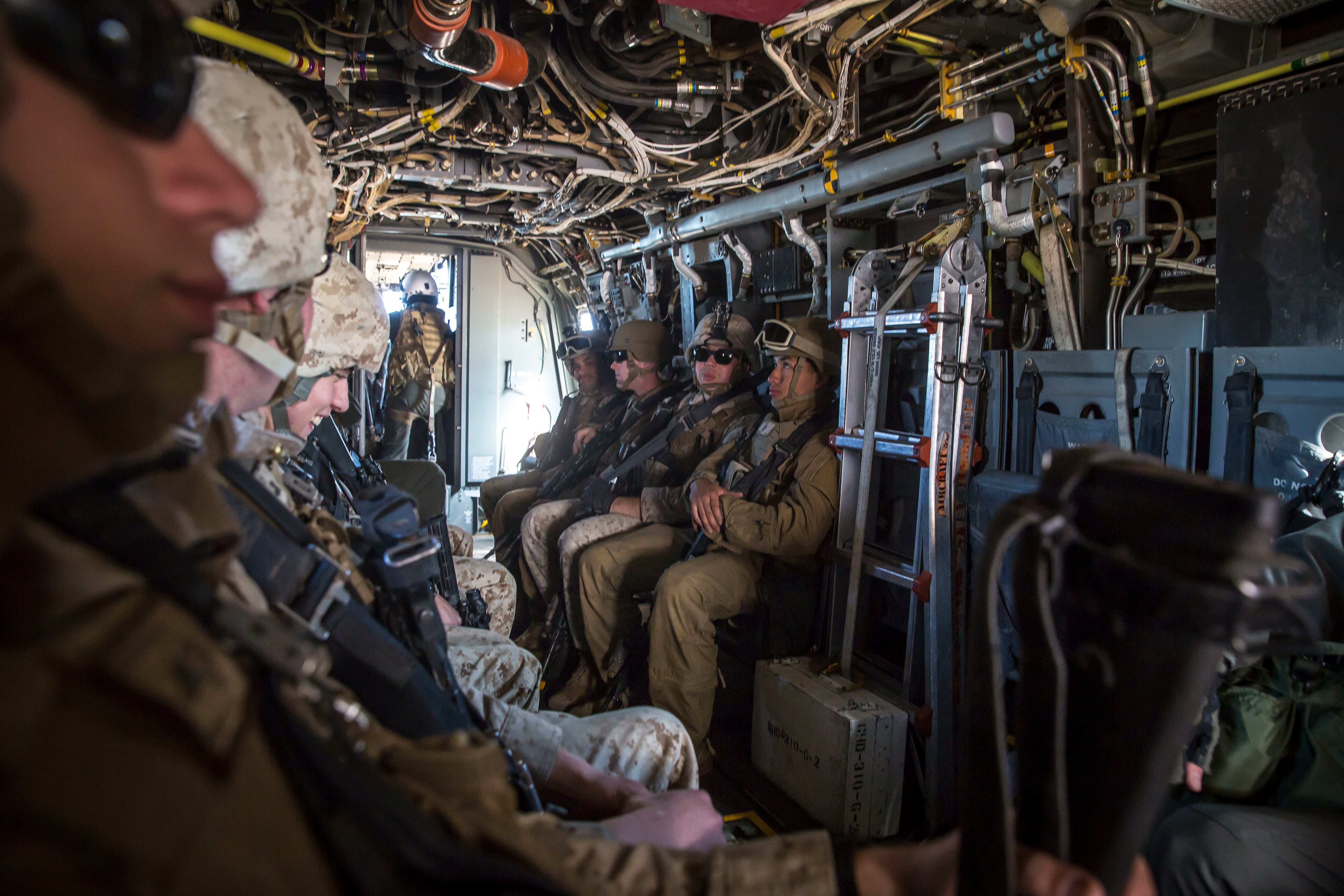WASHINGTON ― Marine aviation planners are looking beyond vertical takeoff aircraft, such as the AV-8 Harrier jet or the MV-22 Osprey, and instead looking at how to fit aviation support to the fighting force, regardless of the kind of aircraft.
New challenges in countering Chinese, Russian and other adversary militaries actions have forced the Corps to find new ways of doing business in all domains, Lt. Col. Nicholas Molder said Wednesday at the 2022 Modern Day Marine exposition in Washington.
“We stepped back from some of the paths we were going down,” Molder said. “We didn’t wash them away, we didn’t push them to the side, we just stepped back from the perspective of a platform replacement mentality.”
RELATED

That’s the standard approach of buying a system to meet a need then fielding, upgrading and employing that system, which can drive how units fight and what’s even possible for concepts of operations.
“We started shifting towards a capability mentality and looking at it from a comprehensive approach that specifically focused on capability development,” he said.
Aviation leaders are looking at new aviation vehicle designs and novel approaches to fill needs or open up new ways of using aviation, Molder said.
Currently, Marine aviation gets its tasks for assault support to the ground or maritime force or helps haul people and equipment around the battle space.
“What we have not considered is what would it mean if the logistics combat element had their own air platform, if they were able to execute, fly, control, on their own?” he said. “It’s going to shatter a lot of paradigms for how we go forward, if that’s the case.”

What that might mean, Molder said, is instead of building an aircraft that would be in the force for the next two to three decades, buying or building an aircraft that is less expensive but replaced more often as technology advances, especially in the drone arena.
A quick example that dominated much of the talk of future Marine aviation in recent years was the Marine Air-Ground Task Force Unmanned Aerial System, or MUX. Only a few years ago at this expo, industry was offering an exquisite, and expensive, one platform solution.
That looked like a large drone with multiple payloads to do a variety of tasks and function as a kind of forward central node. That node would relay data and commands, bring to bear all kinds of strike and intelligence, surveillance and reconnaissance assets. The connection would put Marine expeditionary force-level capabilities to bear for a squad-sized team on the battlefield.
But Congress saw the program as too pricey and it faded from consideration
A revamped version looks instead at the MUX as a “family of systems.” Right now, the Corps is building out its MQ-9 Reaper drone systems and squadrons to, decades later, expand its high-level drone capabilities.
While the MQ-9 is considered an older platform by the other services, it’s new for the Corps. And while it may be the base for now, it’s not likely to be the same drone flying missions in a decade.
But instead of looking for simply a better drone, the Corps instead wants to see how it might find what mission sets, software packages and companion pieces could work to solve aviation problems from ISR to strike to logistics.
The Marine Corps’ recently released 2022 aviation plan showed that the Corps had two MQ-9 Reaper drones as of early April, with plans to eventually have 18 Reapers in the inventory.
That means two active duty squadrons and one training squadron by 2025.
Deputy Commandant of Aviation Lt. Gen. Mark Wise said in a May 2 media briefing that the core of the MUX program is that it hauls capabilities around the battlespace, kind of like a truck.
“It carries a capability,” Wise said. “The MQ-9 will not be the end state. There will be something after that and something after that.”
While the drone program has the benefit of being one of the newer items on the Marines’ wish list, it is far from the dominant system. Though the service likely is to phase out the AV-8 Harrier, given reductions in the aviation plan for pilot training, the MV-22 Osprey numbers will grow as will its use by Marine forces.
The F-35 is replacing the AV-8.
The Corps plans to maintain four operational Harrier squadrons through this fiscal year, when West Coast squadrons transition to the new jet. East Coast squadrons will continue running the Harrier until fiscal year 2027, according to the aviation plan.
The Marines are funding digital interoperability and advanced warfighting capabilities and adding a degraded visual landing system capability for MV-22 pilots.
The service plans to run 14 active duty MV-22B squadrons with 12 aircraft each. It will keep two reserve squadrons at the same configuration and build one fleet replacement squadron with 27 aircraft at the ready, according to the aviation plan.
In total, the Corps will meet “full operational capability” when the 360th MV-22 is delivered. The plan did not provide the date of final delivery.
Todd South has written about crime, courts, government and the military for multiple publications since 2004 and was named a 2014 Pulitzer finalist for a co-written project on witness intimidation. Todd is a Marine veteran of the Iraq War.




